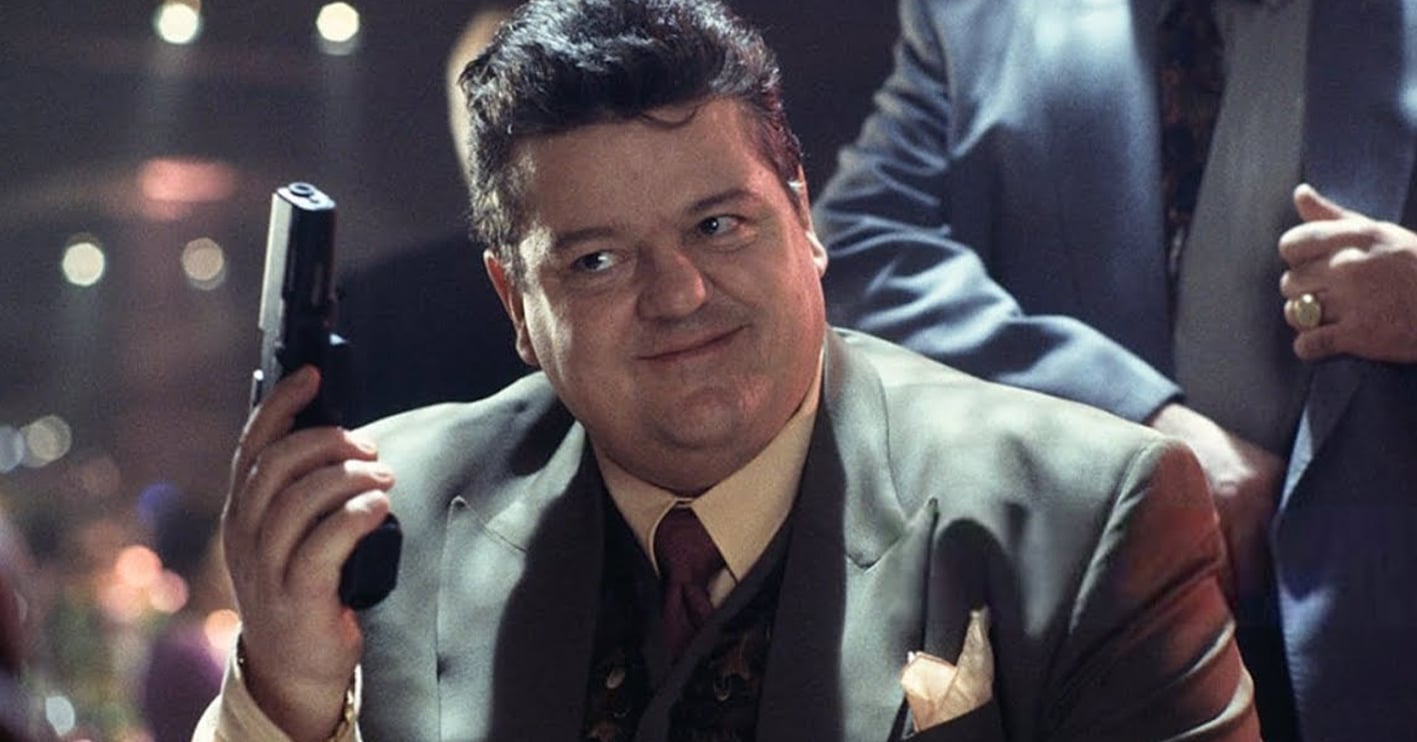James Bond has appealed to generations of movie-goers, but after Roger Moore’s run as 007 descended into smutty eyebrows and a Walther OAP-PK, and Timothy Dalton dropped out, Bond needed a relaunch. And the success of that relaunch rested on the shoulders of Pierce Brosnan in GoldenEye.
There’s more to this iconic Bond entry than you might think, so start your tank engines as we dive off a parapet into its behind-the-scenes secrets!
20. The original script had to be rewritten because it was too similar to an Arnold Schwarzenegger comedy
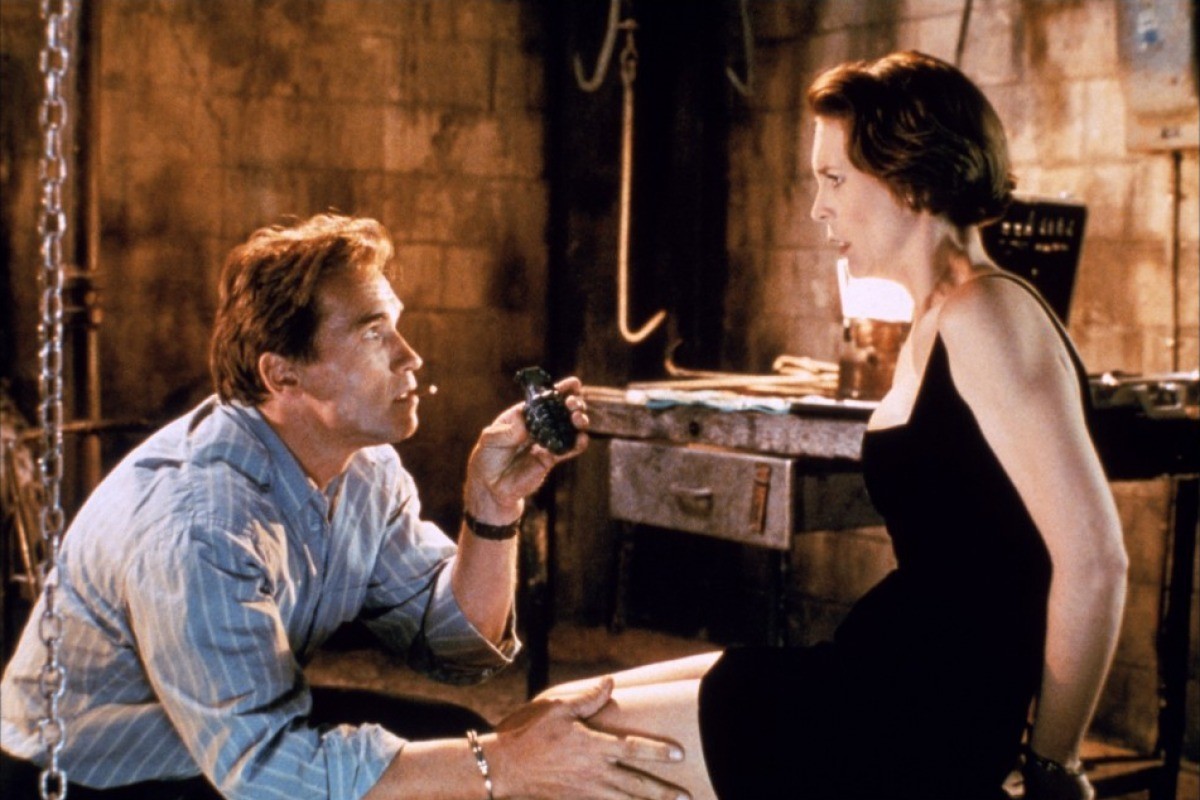
When you’re trying to relaunch the most famous spy franchise in the world, you really don’t want it to come off like a po-faced version of a successful parody, a fate that nearly befell GoldenEye. While GoldenEye was being filmed, director James Cameron released True Lies (1994), an action-comedy starring Arnold Schwarzenegger as a spy struggling to keep his work secret from his wife (Jamie Lee Curtis).
Unfortunately for the team behind GoldenEye, the plot of True Lies was a little too close to comfort to what they were working on, and they had to rewrite several scenes on the fly in order to distance themselves from Arnie’s super-spy adventure. Alas, True Lies wound up the bigger box office hit, making $378.9 million worldwide to GoldenEye’s $356.4 million.
19. It was the first Bond film not directly based on any Ian Fleming story
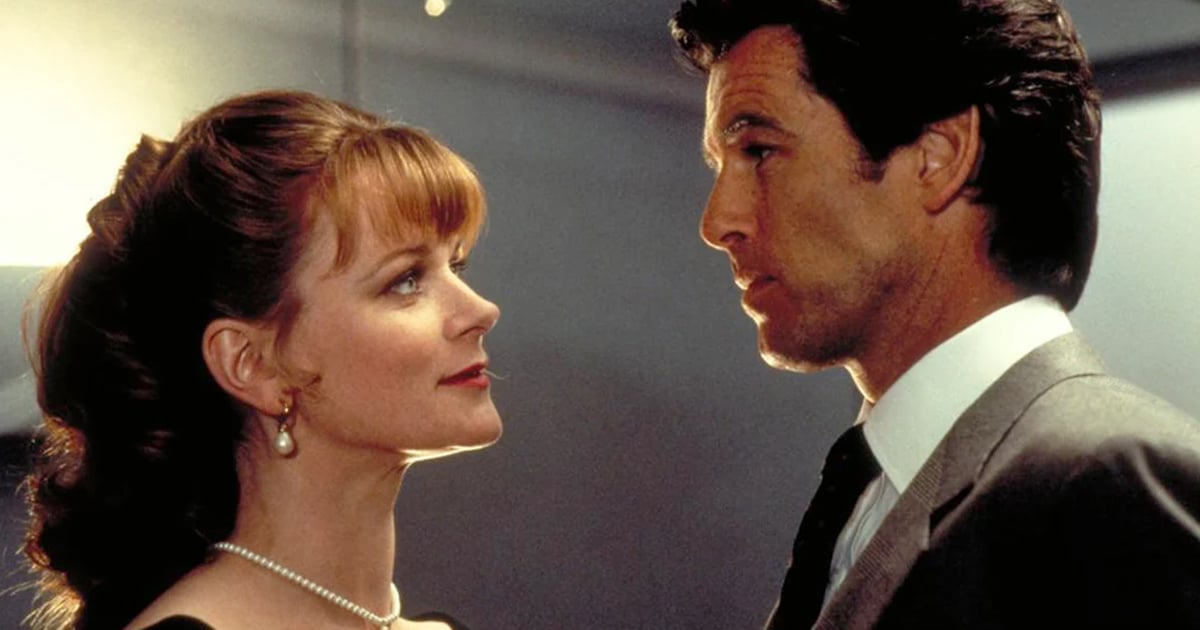
The James Bond series is based on the novels and short stories of the legendary British writer (and former real-life spy) Ian Fleming. Beginning with 1962’s Dr. No, all 16 films made before GoldenEye were directly based on Fleming’s writing in some form. There were some entries that used an entirely different story from Fleming’s original work, such as The Spy Who Loved Me; also, 1989’s Licence to Kill had an original title not taken from a Fleming story, but used plot elements of his novel Live and Let Die and short story The Hildebrand Rarity.
GoldenEye, however, was the first Bond film to boast both an original title and an original story, in no way directly adapting a Fleming work. Before the script was written, the Bond producers had already begun on a film titled The Property of a Lady, named for a Fleming story, which was intended to be Dalton’s third Bond film, though it’s unclear how far this one got before being canned.
18. The film is so dark because it was written with Timothy Dalton in mind

From betrayal to mutilation, and the presence of a psychopathic sex killer, GoldenEye is quite a bit darker than your average Bond film – and that’s because it wasn’t originally intended for Brosnan. When Timothy Dalton was hired to portray Bond, he was contracted for three films, beginning with 1987’s The Living Daylights. Unfortunately for Dalton, his grittier, colder portrayal of Bond was swamped by peppy 80s hits like the Indiana Jones franchise and the cold-but-fantastical revival of Batman.
Worse still, Metro-Goldwyn-Mayer, distributors of the Bond series, became embroiled in legal and financial issues that threatened to sink the franchise for good post-Licence to Kill. After Dalton discussed his future as Bond with producer Albert R Broccoli, who insisted that the drought between films would require Dalton to reprise the role three more times, he quit, and the role passed to Pierce Brosnan (who had, in fact, almost played Bond in The Living Daylights).
17. It’s the first Bond film in which 007 drives a German car
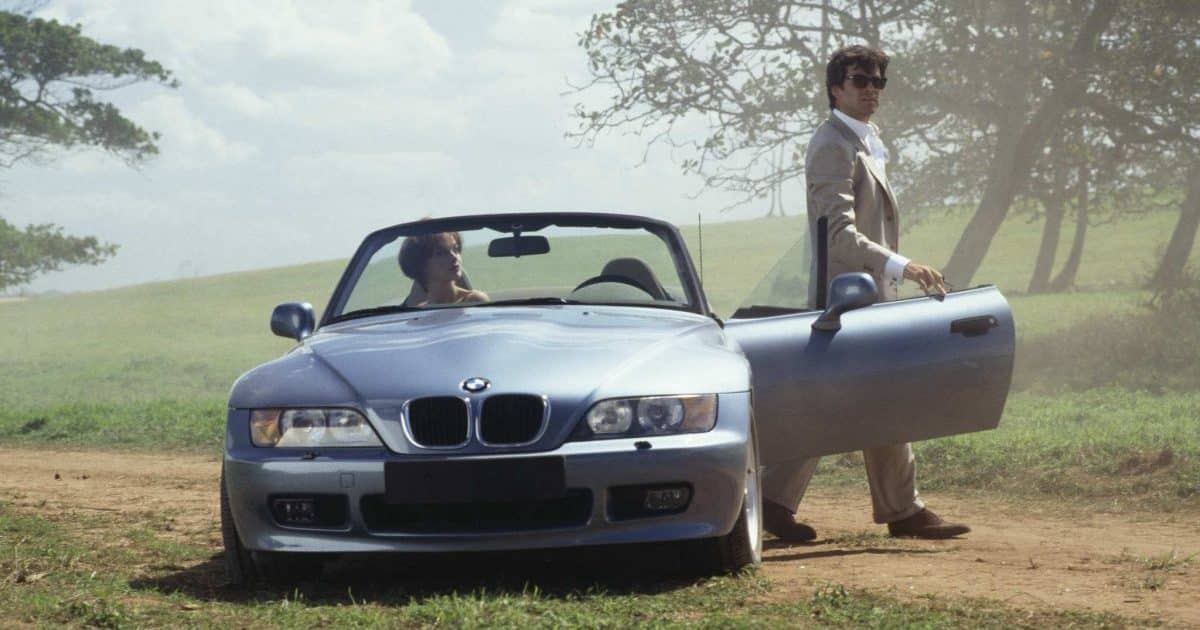
Few fictional characters enjoy as a close an association with a specific car than James Bond, thanks to the franchise’s decades-long arrangement with deluxe British manufacturer Aston Martin. Bond does drive an Aston Martin in GoldenEye, but the film marks the first time 007’s main mode of transport is a German car: the BMW Z3 Roadster.
Providing the cars for the film initially cost BMW $3 million, but when you invest in one of the world’s most famous franchises it tends to pay off: BMW made $240 million in advance sales. This was the first Bond in a three-movie deal to feature BMWs prominently, continuing with the BMW 750iL in Tomorrow Never Dies (1997) and the BMW Z8 in The World is Not Enough (1999).
16. You can bungee jump off the dam yourself today
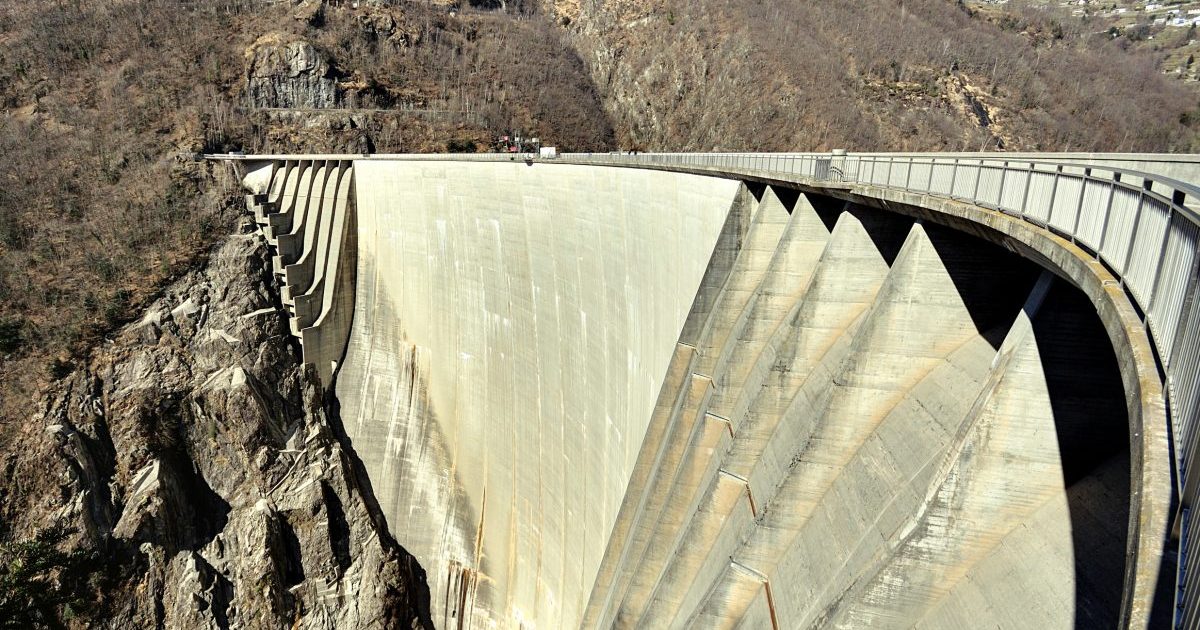
At the beginning of GoldenEye, Bond famously bungee jumps off a dam to freedom (free-dam?); this stunt set a new record for the highest bungee jump in a movie, measuring a massive 722 feet. If you feel like you need an adrenaline fix, and have some underwear to spare, you too can attempt the famous leap from the Contra Dam, also called the Verzacsa Dam for its Switzerland location.
According to the commercial bungee jump operators who run the experience, more than 10,000 have attempted the jump since the film was released – all of whom survived, happily. The stuntman who performed the jump in GoldenEye was Wayne Michaels, who also has a small role in the film as the ill-fated pilot of the Tiger Helicopter, brutally hijacked by Xenia Onatopp.
15. The satellite dish is real and sends messages to aliens

GoldenEye’s spectacular climax sees Bond and Trevelyan fight atop a giant satellite dish. While a lot of Bond sequences are filmed on its London studio set, this is a real location: the Arecibo Observatory, Puerto Rico. Built in 1963, it was the largest single aperture radio telescope in the world for more than 50 years, until it was surpassed by China’s Five hundred metre Aperture Spherical Telescope (FAST) in 2016.
It took the GoldenEye team ten minutes to walk from the edge of the dish to the centre, with the whole device measuring more than 1,000 feet across, at quite a steep incline. The dish is probably best known for the 1974 broadcast of the Arecibo Message, a complicated mix of codes and bitmap images depicting humanity, which was aimed at communicating with aliens more than 25,000 light years away.
14. Roger Moore’s son worked on the film, but wasn’t credited
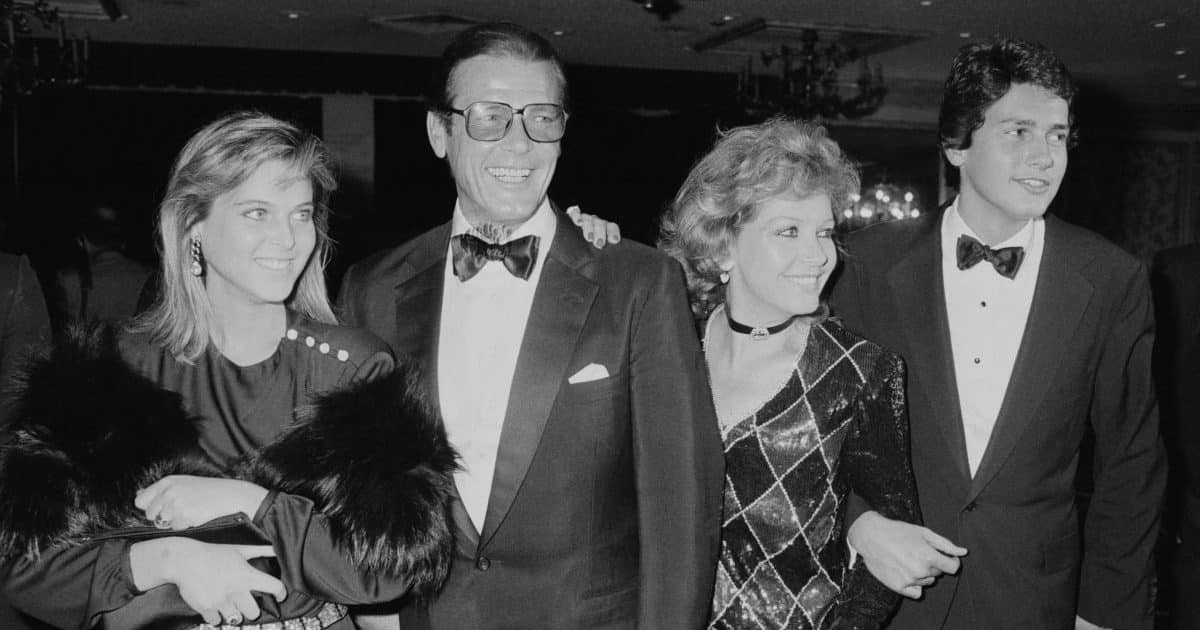
We’re not saying that the film industry is rife with nepotism, but it seems awfully coincidental that Roger Moore’s son ended up doing uncredited work on GoldenEye. Well, just another one of life’s great mysteries! Christian Moore (not pictured) is a producer, best known for his work on the sci-fi B-movie Monarch of the Moon (2005) and several Cold War documentaries, such as The Secret KGB Sex Files (2001), hosted by Roger Moore.
Christian is also rumoured to have worked as a third assistant director on GoldenEye, which would certainly be a timeline consistent with his first documentary work, which began in 1998. For this reason, Roger Moore visited the GoldenEye production on the last day of filming, where he apparently quipped to the cast and crew, “They sent for me, I’m back.”
13. The Rolling Stones turned down the opportunity to write the theme

Along with the iconic Bond theme, the title songs for each 007 movie – ranging from Shirley Bassey’s Goldfinger to Duran Duran’s A View to a Kill – are almost as celebrated as the films themselves. For the Bond relaunch that was GoldenEye, the producers were keen for another hit, and The Rolling Stones. However, the rock legends turned the offer down, as they just weren’t interested in making Bond music.
The producers’ next idea, that the song should by written by Bono and The Edge of U2 and sung by Tina Turner, fortunately stuck. “Bono and the Edge are neighbours of mine in the south of France,” Turner explains in John Burlingame’s book The Music of James Bond. “They came over and Edge played the song on my piano… This one sounds like it fits the movie.”
12. The title comes from the name of Ian Fleming’s beach house
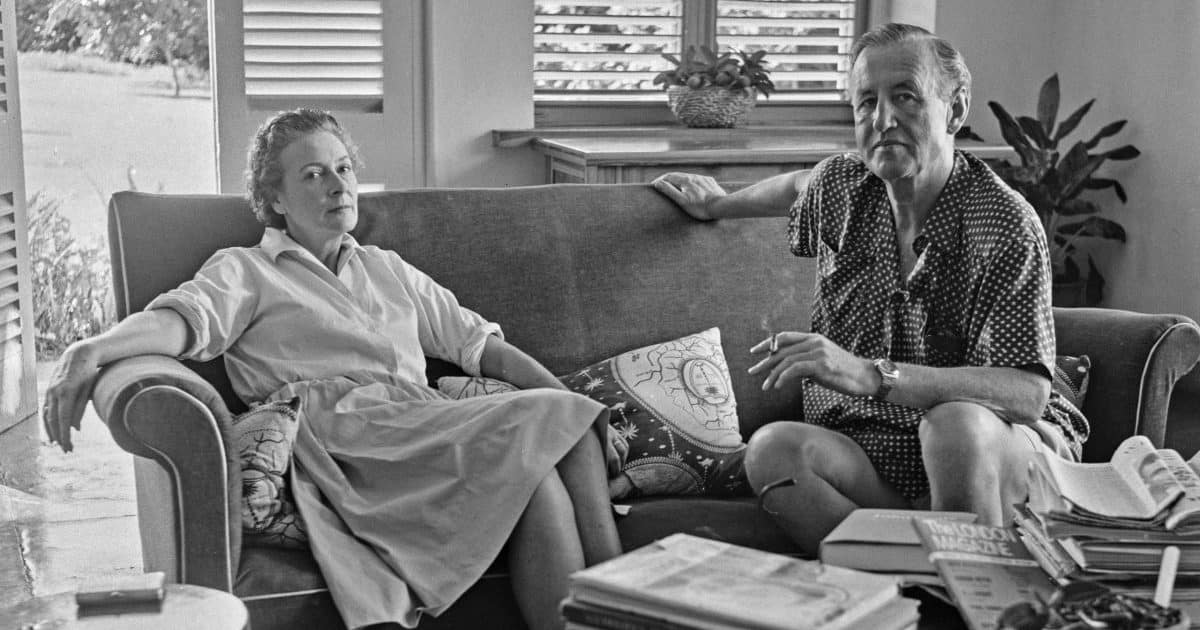
Even though GoldenEye had an entirely original plot, that doesn’t mean the Bond producers were abandoning Fleming altogether. In fact, the film takes its name from Fleming’s famous Jamaican home, Goldeneye (yes, lower case ‘e’). The estate is located on Oracabessa Bay, not far from the town of St Mary, Jamaica. Fleming bought the land in 1946, and had a house built on a cliff overlooking his private beach.
Fleming wouldn’t publish his first Bond novel, Casino Royale, until 1952, meaning both that it was purchased with wealth inherited from his aristocratic family and that almost all Bond writing took place within those walls. The estate itself was named for Operation Goldeneye, a World War II sabotage plan which Fleming had helped to plan during his time in the Royal Navy.
11. A contest winner waited six and a half years to star
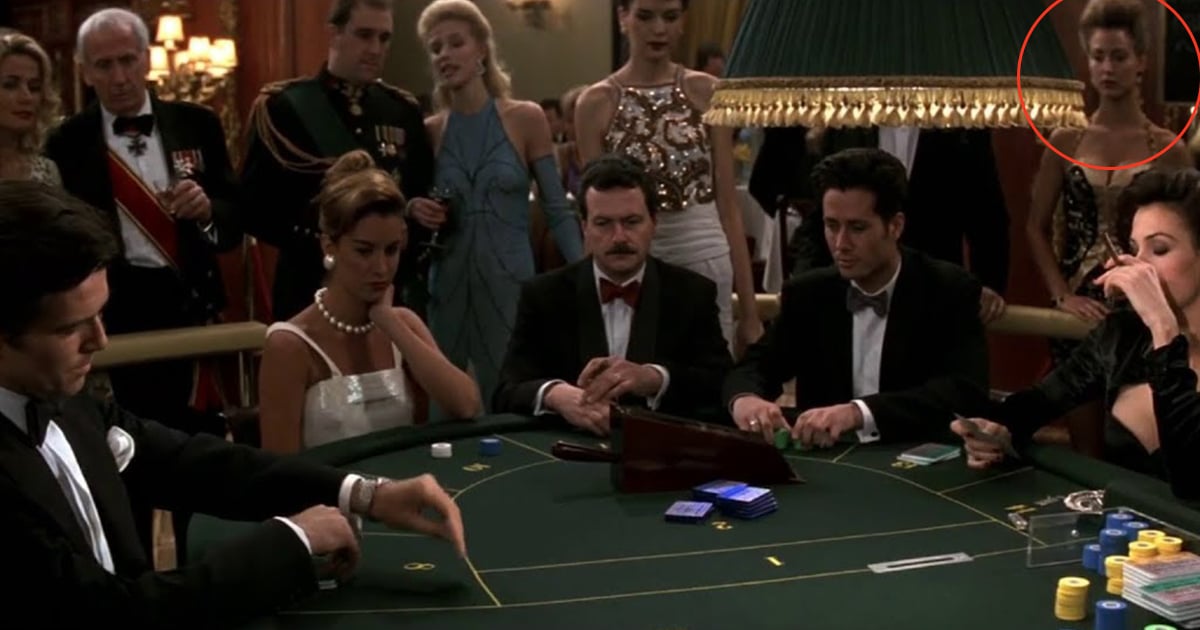
Some films are just films, but a global powerhouse like Bond has its own cottage industries – one of which is contests to star as an extra in the film. First run by Playboy magazine, and often sponsored by TV channels like MTV and VH1, the first contest to ‘Be A Bond Girl’ ran in July 1979, with the grand prize being a role in For Your Eyes Only.
These contests continued into the Dalton days. But when MGM became embroiled in legal trouble, the prize of a contest to star in Timothy Dalton’s third Bond film was a little delayed – by six and a half years. Nonetheless, the contest winner did end up in GoldenEye, and can be seen to the left of Xenia Onatopp in the Baccarat scene, and then again, framed by Bond and Onatopp as they quip at each other.
10. It’s the first Bond film to use CGI

The first Bond film to release in the 90s, even GoldenEye fell prey to the period’s surge in the use of computer-generated imagery, but not exactly where you might expect. These days, CGI is often used in action sequences to create death-defying stunts and enormous explosions, the likes of which would almost certainly kill a stunt performer (or, at the very least, scar one side of their face). In GoldenEye, however, the CGI is used for the gun barrel sequence.
Originally, the gun barrel shot was made through a specially designed pinhole camera created by title designer Maurice Binder. After Binder’s death in 1991, music video and TV commercial director Daniel Kleinman was hired to replace him. Under his direction, the barrel has since been computer-generated, allowing for more variation in light and shade within the barrel itself.
9. Ralph Fiennes auditioned to play Bond (as did Sean Bean)

When you’re looking to cast a lead in a billion-dollar movie franchise, it’s important you make the right choice. No shortage of actors were keen to be the fifth James Bond – among them Ralph Fiennes. Back in the early 90s, when Eon Productions were searching for Timothy Dalton’s successor, Fiennes was making waves as Heathcliff in Emily Brontë’s Wuthering Heights (1992) and as Amon Göth in Schindler’s List (1993). Fiennes auditioned for GoldenEye, but he was rejected.
He then auditioned again in 2004, losing out again to Daniel Craig. Eventually, of course, Fiennes would be cast as M in 2012’s Skyfall, replacing Judi Dench. Sean Bean had also auditioned for the role of Bond, first aiming to be cast in The Living Daylights (1987), with the part eventually going to Timothy Dalton. Bean then auditioned again for GoldenEye, but was instead cast as Alec Trevelyan – which is far from a bad deal!
8. Pierce Brosnan broke one of Famke Janssen’s ribs

She doesn’t get as much credit as she deserves, but the 1990s really was the decade of Famke Janssen. The Dutch model-turned-actress made her name as GoldenEye’s sado-masochistic Soviet assassin Xenia Onatopp in GoldenEye, notorious for crushing her victims to death with her thighs. It’s fair to say that her character required some intensely physical fight scenes, particularly when Onatopp and Bond fight in a sauna.
Janssen insisted that Brosnan ram her into the walls for real, as she wanted her reaction to be as genuine as possible. The walls were padded, but apparently not quite enough, as Janssen broke a rib while filming the scene. Unfortunately for Janssen, she would suffer this injury again on film sets, also breaking a rib on Hansel & Gretel: Witch Hunters (2013), and cracking a rib shooting The Blacklist: Redemption (2017).
7. It was the first-ever Bond film to shoot in Russia
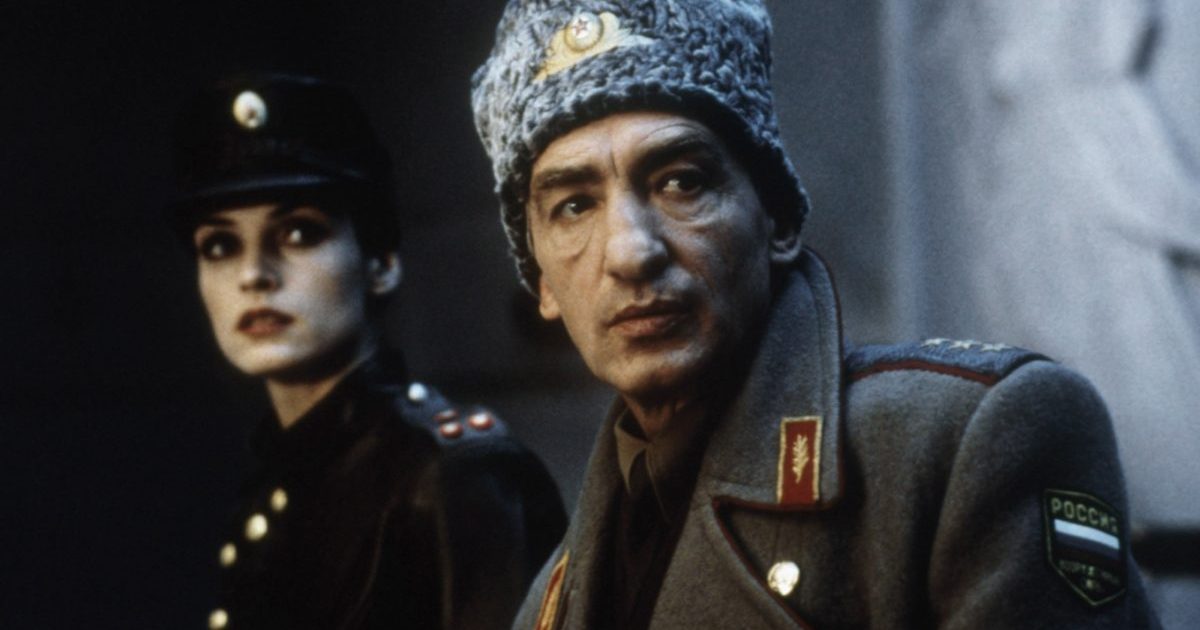
It’s easy to forget just how important the years between Licence to Kill and GoldenEye were: this period saw the complete collapse of the USSR, ending the Cold War which had been the backdrop to the entire Bond franchise. The fall of the regime in Russia opened up its iconic locations to film studios, hence GoldenEye became the first Bond film to shoot in Russia, using several locations in St Petersburg. However, several locations in England were used for some Russia-set scenes.
Epsom Downs racecourse serving as St Petersburg airport and much of the tank chase being shot in London. Part of the reason for these decisions was the financial cost of taking a film crew to (and looking after one in) far-off locales. The other part was to do with security, with the cast and crew needing bodyguards for the duration of filming.
6. Pierce Brosnan’s son is his hand double in the film
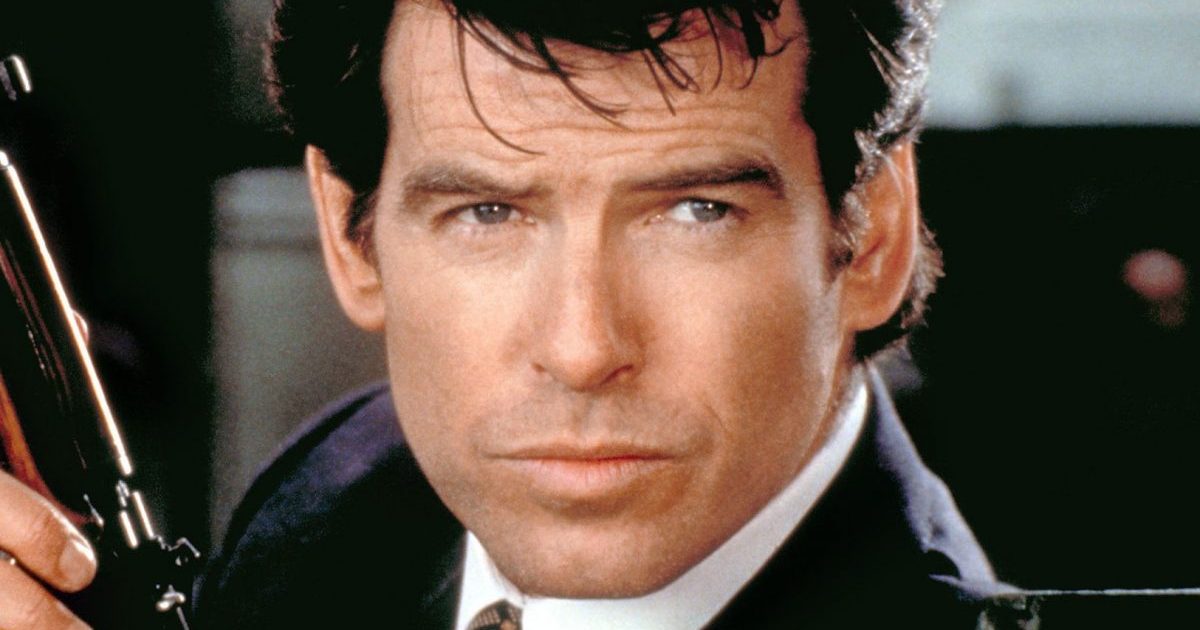
You probably watched GoldenEye thinking you were looking at Pierce Brosnan’s own hands the whole time- but you weren’t. Before shooting began, Brosnan hurt his hand, resulting in a visible injury. In order to save time and money, Martin Campbell, the director of GoldenEye, drafted Pierce Brosnan’s then-23-year-old son Christopher Brosnan for close-up shots of 007’s hands.
Scenes where Brosnan Jr’s hands stand in for his father’s include various scenes inside the Aston Martin DB5, such as pulling the handbrake and opening the glove compartment, and using the laser pointer in the opening bungee jump. Sadly, Christopher Brosnan has since become estranged from his father, reportedly over his refusal to kick a destructive drug habit.
5. Alec Trevelyan is named after a film censor who hated Bond movies

The plots of many Bond films focus on 007’s difficulty separating his personal desire to take revenge against those who’ve wronged him and the sober matter of saving the world. But just because Bond tends to side with the greater good, it doesn’t mean that the film itself can’t act vengefully. One of the best examples of this is the name of Bond’s foe in Goldeneye: Alec Trevelyan.
The name is thought to be a tongue-in-cheek reference to John Trevelyan, a film critic and censor who was particular scornful of the Bond films. Working as the head of the BBFC in the 60s, Trevelyan was particularly disgruntled by the “callous sadism” in Bond’s character, which he wrote about in his memoir, What the Censor Saw, published in 1973. Naming Sean Bean’s villain after him was a light-hearted act of revenge on the part of the Bond filmmakers.
4. Minnie Driver cameos as Robbie Coltrane’s mistress who can’t sing
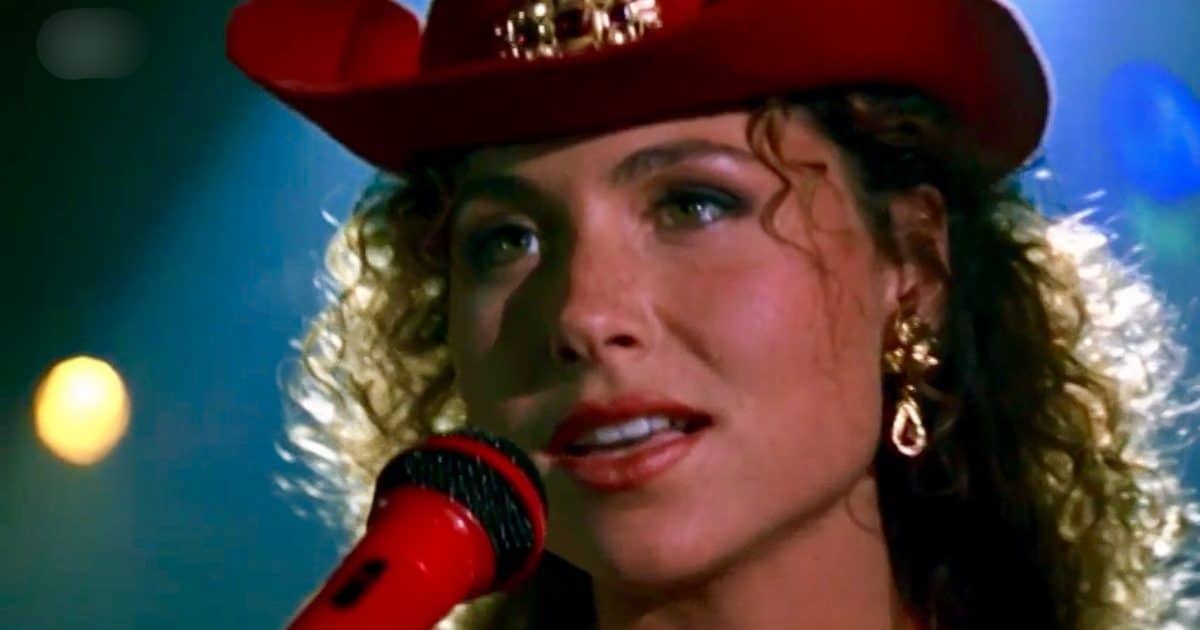
British actress Minnie Driver landed a small part in GoldenEye as Irina, the mistress of Valentin Zukovsky (Robbie Coltrane). When Bond goes to meet Zukovsky, she can be seen singing Tammy Wynette’s Stand By Your Man – ironic for a mistress to sing, as it was made famous through Hillary Clinton’s 1992 defence of her husband’s infidelity. Irina is singing so badly, however, that Bond asks “who’s strangling the cat?”, and Zukovsky sends her away.
Driver earned just $5,000 for the role, but she badly needed the work at the time. Happily, she would soon be catapulted to fame with a lead role in Circle of Friends (also 1995) and become one of the late 90s’ biggest stars. Driver went on to star in Good Will Hunting, for which she would be nominated for the Academy Award for Best Supporting Actress.
3. GoldenEye is the most murderous film in the James Bond franchise
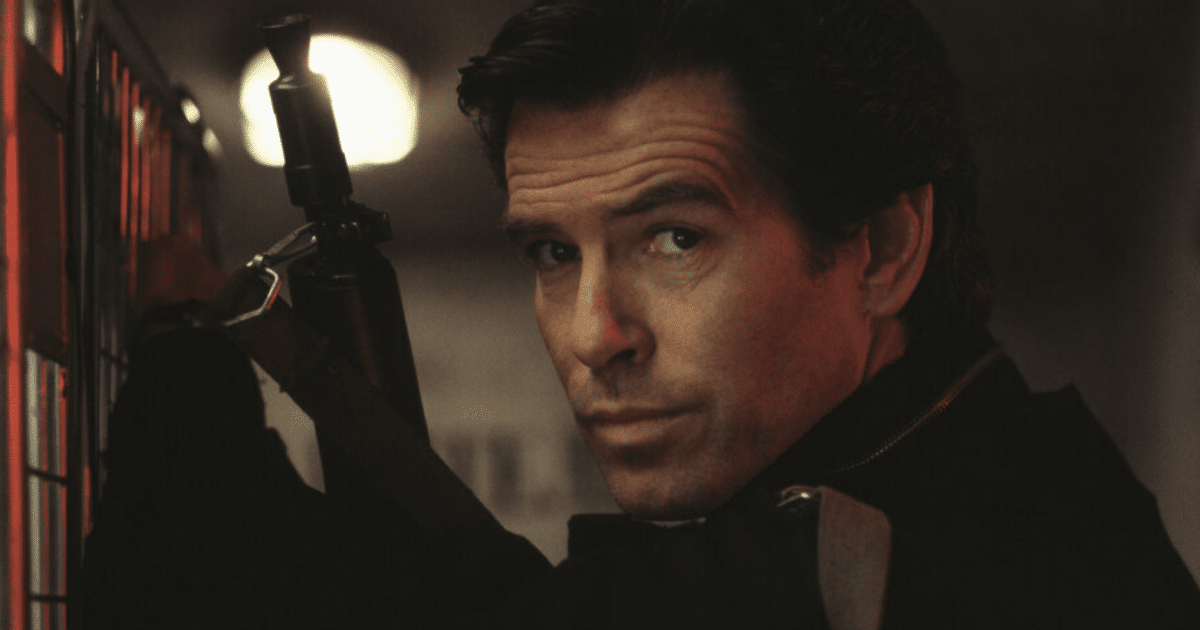
You might not have realised that Bond kills more people in GoldenEye than in the entire franchise. According to an analysis by The Guardian, Bond kills 47 people in GoldenEye, the next closest in Bond kills being The Spy Who Loved Me (1977) at 31. In fact, Brosnan is by far the deadliest Bond, with 135 kills across four films – twice the average per film.
That said, GoldenEye is far from the film with the most deaths. That honour belongs to Sean Connery’s penultimate EON bond, You Only Live Twice (1967), with an astonishing 196 on-screen deaths overall. The Spy Who Loved Me comes second with 147 total deaths, whilst Thunderball is third with a body count of 110.
2. Pierce Brosnan boycotted the film’s France premiere
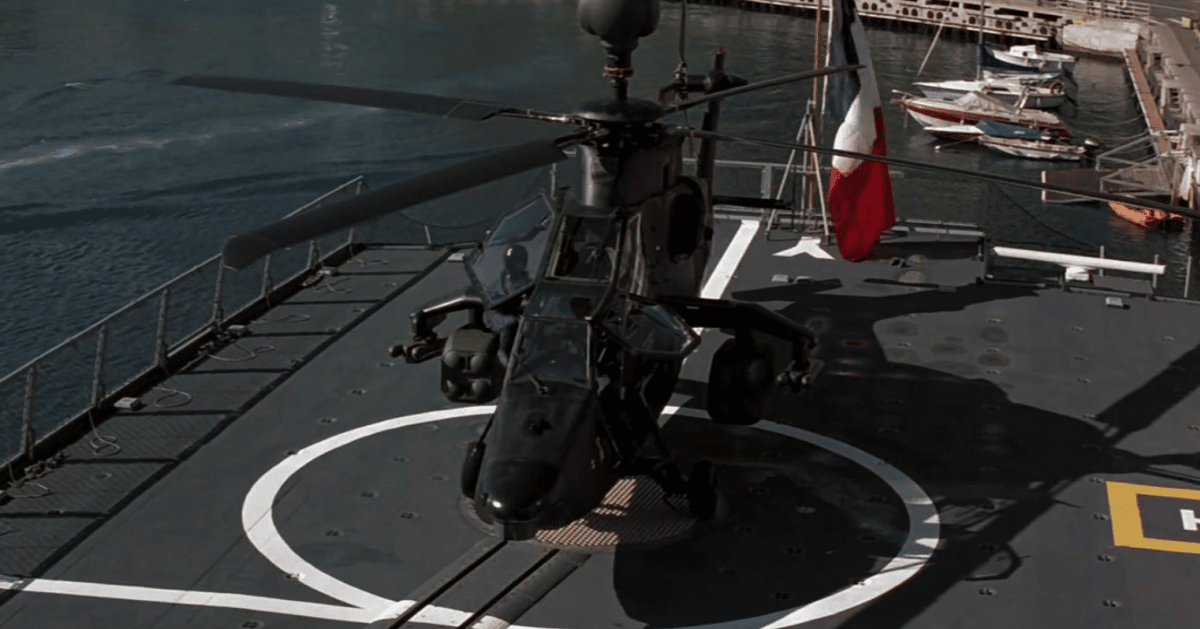
The French navy provided the famous Eurocopter Tiger for the GoldenEye production team, as well as the full use of their frigate FS La Fayette. They even allowed the use of their official Navy logo in promotional material for the film. However, Pierce Brosnan, who has frequently been involved in Greenpeace, was less pleased with the film being effectively bought off by the French military, as well as its ongoing nuclear testing programme.
Brosnan threatened to boycott the French premiere of the film, a glitzy event that would have celebrated the government’s involvement in the production. As it’s hardly a Bond premiere without Bond himself, the event was cancelled. Brosnan’s environmental work doesn’t end with Greenpeace, as he is also on the board of advisors for the Sea Shepherd Conservation Society.
1. Pierce Brosnan wasn’t allowed to wear a tuxedo in any other film while playing Bond

As well as potentially condemning its leading men to a lifetime of type-casting, playing Bond also comes with some sartorial restrictions. 007 actors are said to be forbidden from wearing a tuxedo or acting like Bond in any other capacity while they’re in the role. This contractual obligation is said to have begun after Roger Moore upset the Bond producers by sending up his Bond persona in 1981 comedy The Cannonball Run.
Pierce Brosnan is perhaps the greatest evidence that such a contract clause exists. In his 1999 film The Thomas Crown Affair, Brosnan’s title character attends a black tie event in a shabby-looking suit with an open collar. Brosnan’s lacklustre appearance drew criticism, but it makes sense when we take into account the no-tuxedo rule.

